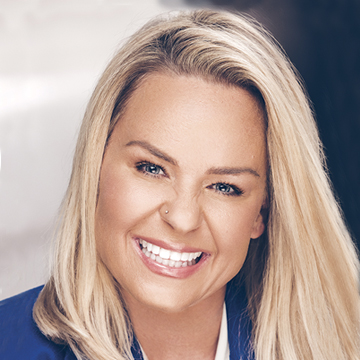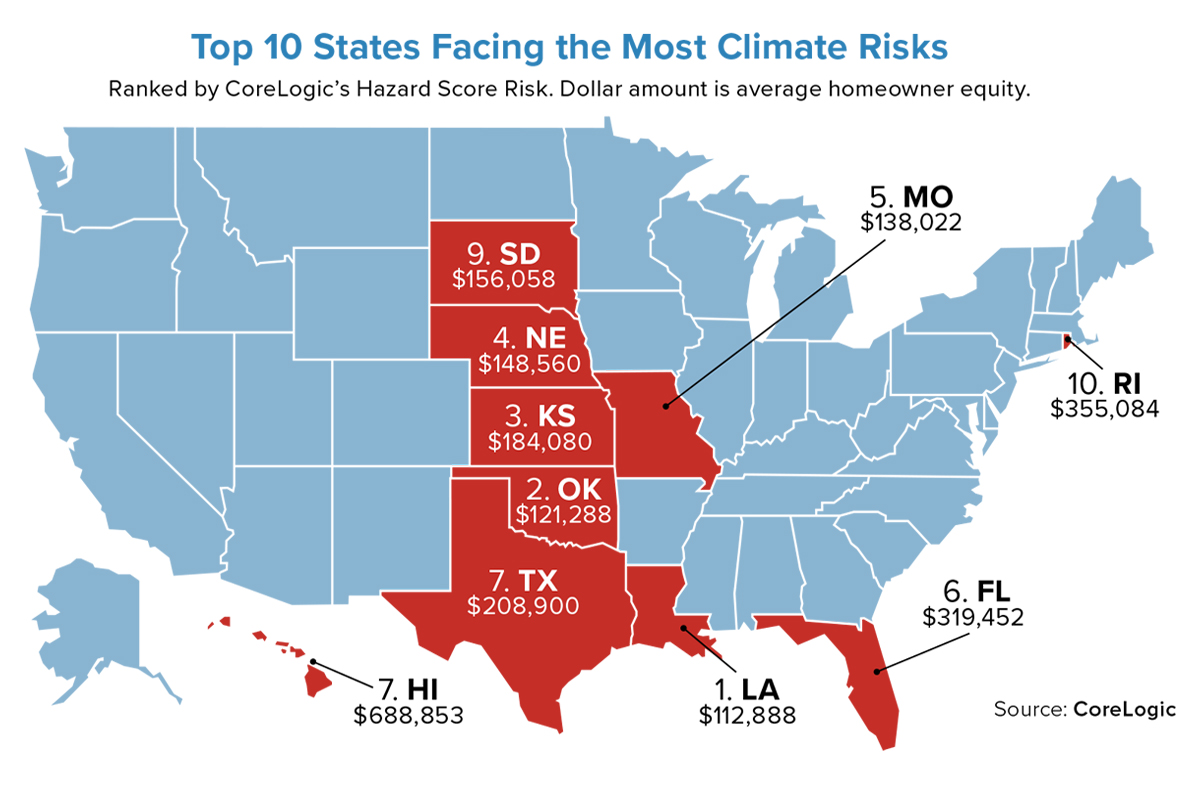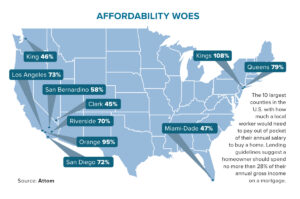The increasing occurrence and cost of catastrophic weather events has become more concerning for communities and households in many U.S. markets, particularly as the number of events causing over $1 billion in losses surges. In 2023 alone, there were 28 such events, totaling over $88 billion in aggregate losses.
That’s up from an average of 14 events in the period between 2010 and 2020 and five events on average from 1980 to 2010. To that end, CoreLogic’s Climate Risk Analytics uses scenarios created by the Intergovernmental Panel on Climate Change to provide a comprehensive framework for exploring the potential impacts of climate change on properties.
With the anticipated increase in climate-related hazard events, the cost is bound to rise. Average annual losses from natural perils are expected to increase by an average of 23% by 2050, according to CoreLogic estimates based on a moderate climate change model. This presents extensive costs to property owners, insurers, mortgage lenders and the federal government.
Some markets with persistent occurrence of flooding, such as New Orleans, are expected to see these losses increase by 44% (not adjusting for inflation or future increase in population, number of properties, or home prices). For example, the expected annual losses in New Orleans would increase from the current $1.4 billion to over $2 billion by 2050.
The increasing cost of natural perils has led to growing concerns that housing markets are mispricing these risks and that with better information and disclosures of past damages and risks, more homebuyers would price in risk more efficiently. Some CoreLogic analyses and other empirical studies have already observed price discounts for properties located in higher risk areas.
Examination of flood zone impact on home prices in Miami showed that locations within a 100-year flood zone reduce the home price per square foot by anywhere between 9% to 18% compared to a similar home in a risk-free zone. Another analysis using CoreLogic’s wildfire risk score, which provides a property-level hazard risk assessment that accounts for various factors, such as risk rating, proximity to higher-risk areas, slope, vegetation and other variables, demonstrated that properties with higher wildfire risks in San Diego sell for less and appreciate at a slower rate than similar properties with lower wildfire risks, assuming all other factors are equal.
Nevertheless, risk pricing has not been universally capitalized in property prices across the U.S., depending on people’s perception and understanding of risk. With increasing costs of property insurance premiums and shifting price signals based on the new National Flood Insurance Program’s pricing methodology, homeowners are going to become increasingly more aware of risks of living in some areas as it becomes prohibitively expensive or very difficult to obtain hazard insurance.
More importantly, with capitalization of these risks in home prices and subsequent price declines, many homeowners would be at risk of losing value in their largest asset — their home. In addition, cities that heavily rely on property taxes for revenue would be vulnerable to fiscal deficits if the assessed values of properties in higher risk areas decline.
Unfortunately, some of the areas with highest risk scores already have relatively lower levels of home equity accumulation. Thus, further declines in home values could easily wipe out the home equity that could potentially provide households with some financial buffer and further exacerbate wealth gaps in the U.S. For instance, while average borrower equity tops $300,000, the average equity often falls below half of the national mean in counties with highest risk scores. In Louisiana, which tops as the state with highest hazard score, the average equity is about $113,000. Oklahoma follows with average home equity at about $122,000, while Kansas averages little over $184,000 in home equity.
Author
-

Selma Hepp is a senior vice president and chief economist for Cotality, formerly CoreLogic, the nation’s largest provider of advanced property and ownership information, analytics and data-enabled services. Hepp leads the economics team, which is responsible for analyzing, interpreting and forecasting trends in real estate, mortgage and insurance. Prior to joining Cotality, she was chief economist and vice president of business intelligence for Pacific Union International, later acquired by Compass.





